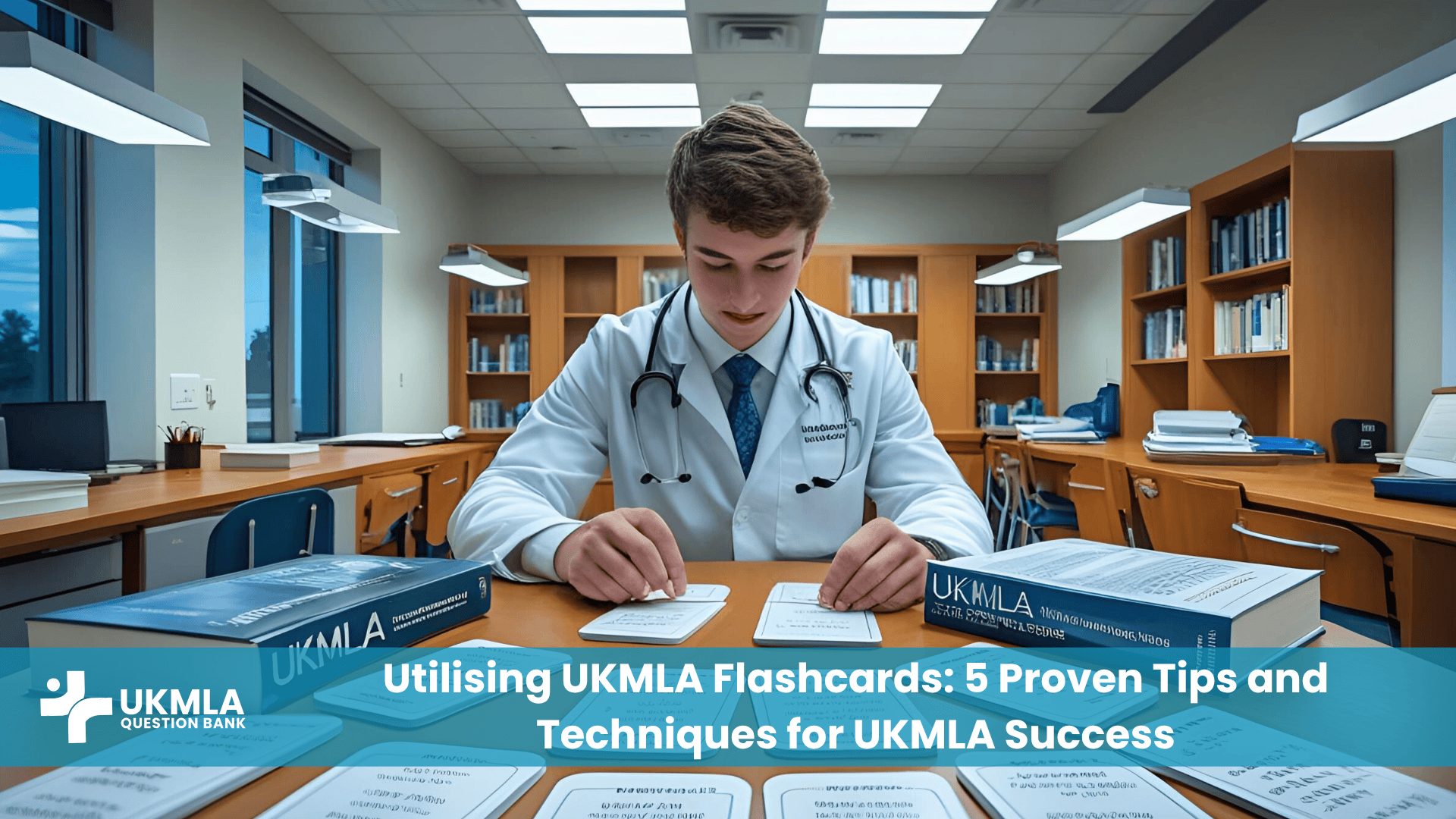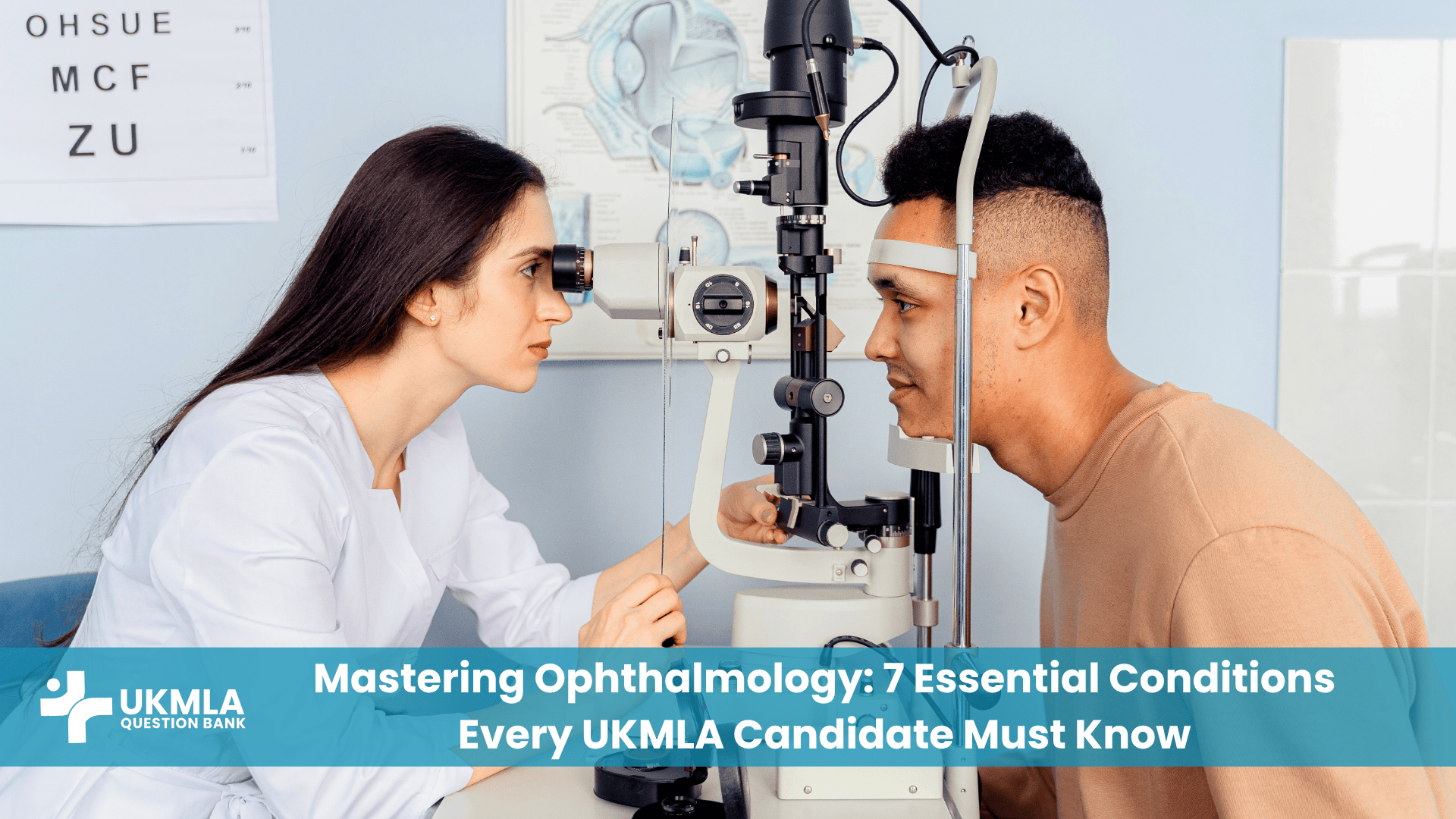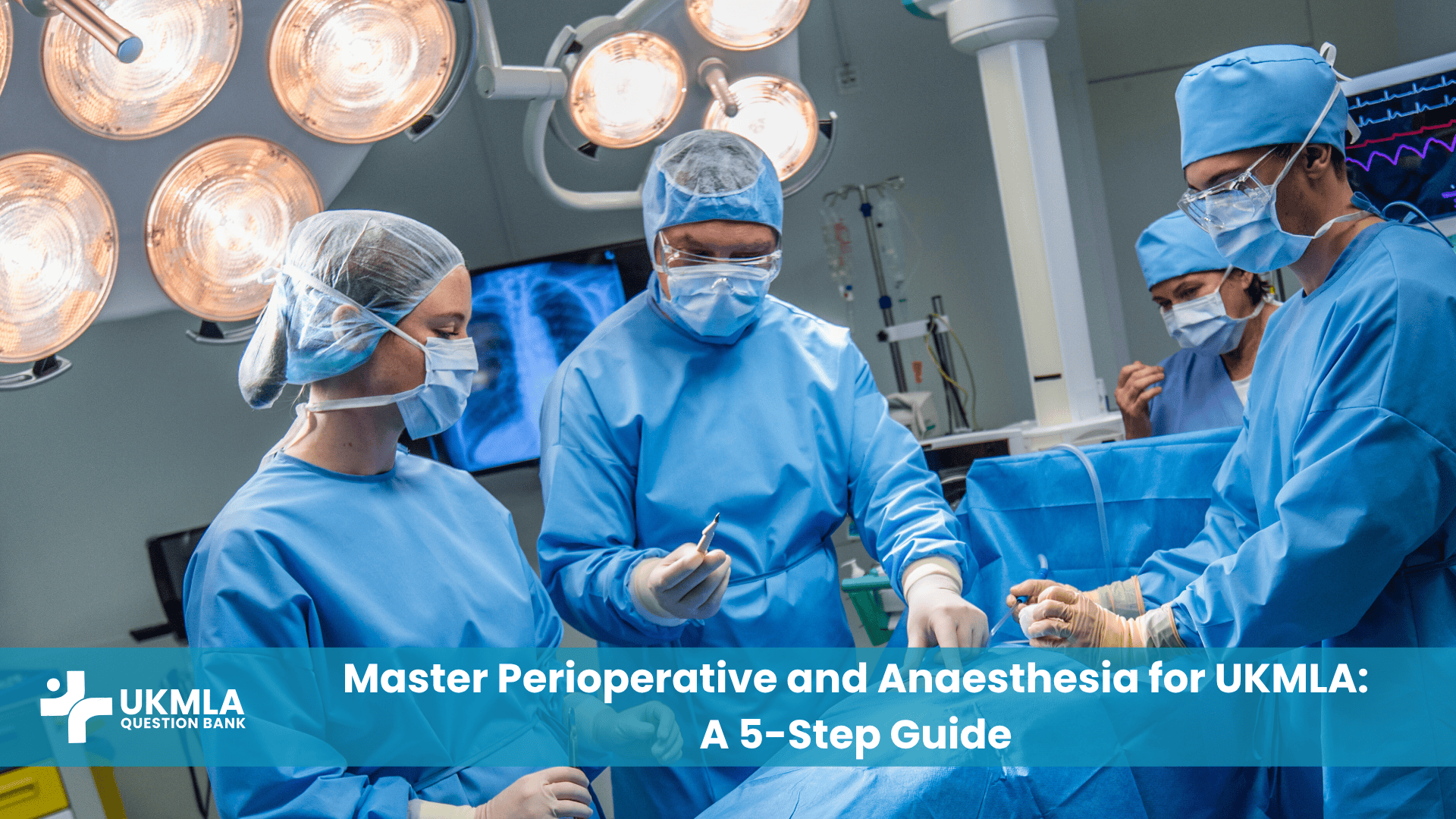Navigating the path to UK medical licensure via the UK Medical Licensing Assessment (UKMLA) requires a clear understanding of what you need to know and what skills you need to demonstrate. Amidst a vast ocean of medical knowledge, the General Medical Council (GMC) provides a crucial navigational tool: the GMC UKMLA Content Map. This document is far more than a simple syllabus; it’s your comprehensive blueprint, meticulously outlining the scope of the UKMLA and detailing the core competencies expected of a doctor ready for safe practice in the UK.
For both UK medical students and International Medical Graduates (IMGs), effectively utilizing the GMC UKMLA Content Map is not just recommended—it’s fundamental to structuring your revision and maximizing your chances of success. This guide will explore what the Content Map is, how it’s structured, and most importantly, how you can leverage it as your ultimate blueprint for UKMLA preparation.
What Exactly is the GMC UKMLA Content Map?
The GMC UKMLA Content Map is an official document published by the General Medical Council that specifies the core knowledge, skills, and behaviours that can be assessed within the UKMLA. It is directly linked to the GMC’s Outcomes for graduates, which set out what newly qualified doctors from UK medical schools must know and be able to do.
The primary purpose of the Content Map is to ensure that the UKMLA is a fair, transparent, and relevant assessment. It provides clarity to candidates, educators, and examiners about the breadth and depth of the assessment. As we discussed in “[Why the UKMLA Was Introduced: Understanding the GMC’s Aims],” a key objective of the UKMLA is to establish a common standard, and the Content Map is integral to achieving this.
Think of the Content Map as the official syllabus for the UKMLA. It doesn’t list every single fact you need to know, but it defines the domains, topics, and patient presentations that form the basis of the Applied Knowledge Test (AKT) and the Clinical and Professional Skills Assessment (CPSA). Understanding its structure is the first step, which you can relate to our guide on “[Decoding the UKMLA: Structure, Format, and Scoring Explained]”.
Structure of the GMC UKMLA Content Map
The GMC UKMLA Content Map is typically organized into three main domains, reflecting the multifaceted nature of medical practice:
Domain 1: Areas of Clinical Practice
This domain covers the broad range of medical and surgical specialties and common conditions that a doctor at the point of registration should be able to manage. It often includes:
Acute and Emergency Medicine: Managing common emergencies, initial assessment and resuscitation.
Medicine: Covering specialties like cardiology, respiratory medicine, gastroenterology, endocrinology, neurology, renal medicine, rheumatology, dermatology, infectious diseases, and haematology.
Surgery: Including general surgery, trauma and orthopaedics, urology, ENT, and ophthalmology.
Mental Health: Assessing and managing common psychiatric conditions.
Obstetrics and Gynaecology: Core knowledge related to women’s health, pregnancy, and childbirth.
Paediatrics and Child Health: Managing common childhood illnesses and developmental issues.
General Practice / Primary Care: Understanding the role of the GP, managing chronic diseases, and health promotion.
For each area, the map often details specific conditions, patient presentations (e.g., “adult with chest pain,” “child with fever”), and expected levels of competence (e.g., diagnosis, investigation, management).
Domain 2: Areas of Professional Knowledge
This domain focuses on the ethical, legal, and professional foundations of medical practice in the UK. Key areas include:
Professional Values and Behaviours: Adherence to GMC’s Good Medical Practice, honesty, integrity, and respect for patients.
Medical Ethics and Law: Understanding consent, confidentiality, capacity, end-of-life care, safeguarding, and relevant UK legislation.
Patient Safety and Quality Improvement: Principles of clinical governance, risk management, error reporting, and audit.
Health Promotion and Public Health: Understanding epidemiology, screening, disease prevention, and health inequalities.
These aspects are crucial not just for the AKT but are heavily tested in the CPSA through communication and professionalism stations. Meeting the “[Eligibility Criteria for UKMLA: A Comprehensive Checklist]” is the first step, but mastering this domain is vital for practice.
Domain 3: Clinical and Professional Capabilities
This domain outlines the practical skills and overarching professional attributes required. It often overlaps with the other two domains but focuses on how a doctor practises:
Communication and Interpersonal Skills: Effective communication with patients, families, and colleagues; empathy; and cultural sensitivity.
Clinical Skills: History taking, physical examination, diagnostic reasoning, formulating management plans, and performing practical procedures.
Information Management and Technology: Using clinical IT systems, maintaining accurate records.
Teamwork and Leadership: Working effectively within multidisciplinary teams.
Education and Research: Commitment to lifelong learning and understanding basic research principles.
This domain is particularly relevant for the CPSA component of the UKMLA.
Why the Content Map is Your Most Valuable Study Tool
The GMC UKMLA Content Map is indispensable for several reasons:
Defines the Scope of Revision: Medicine is vast. The Content Map narrows down what is examinable, allowing you to focus your study efforts efficiently. It prevents you from getting lost in overly niche topics while ensuring you cover the core essentials.
Ensures Comprehensive Coverage: By systematically working through the Content Map, you can ensure that you haven’t missed any critical areas.
Guides Resource Selection: When choosing textbooks, question banks, or courses, you can check if their content aligns well with the official Content Map.
Helps Identify Strengths and Weaknesses: As you review the map, you can self-assess your confidence levels in different areas, guiding where you need to dedicate more revision time.
Provides a Framework for Your Study Plan: The structure of the Content Map can be used to create a logical and organized study schedule. Our upcoming guide, “[Creating the Perfect UKMLA Study Plan: A 3-Month Template],” will show you how.
Reduces Exam Anxiety: Knowing that you are preparing based on the official GMC blueprint can reduce uncertainty and build confidence.
How to Effectively Use the GMC UKMLA Content Map for Success
Simply downloading the GMC UKMLA Content Map isn’t enough. Here’s how to actively use it as your blueprint:
1. Download and Familiarize Yourself
Get the Latest Version: Always ensure you are using the most up-to-date version of the Content Map from the official GMC website.
Read it Thoroughly: Understand its structure, the domains, and the level of detail provided for different topics and presentations.
2. Use it as a Checklist
Systematic Review: Go through each item in the Content Map. For each condition or presentation, ask yourself:
Do I understand the underlying pathophysiology?
Can I list the common signs and symptoms?
What are the key investigations?
What are the principles of management (pharmacological and non-pharmacological)?
What are the potential complications or red flags?
What are the relevant ethical or professional considerations?
Traffic Light System: Rate your confidence for each topic (e.g., Green = Confident, Amber = Needs Review, Red = Weak Area). This will help prioritize your study.
3. Integrate it with Your Study Resources
Map Your Notes: As you study from textbooks or online resources, cross-reference the information with the Content Map to ensure alignment.
Question Bank Correlation: When using question banks, try to identify which areas of the Content Map the questions are testing. This reinforces your understanding of how the map translates into exam questions. The resources at ukmlaquestionbank.com are designed with such alignment in mind.
Focus on High-Yield Areas: While all areas are examinable, some conditions and presentations appear more frequently or carry more weight. The Content Map can help you identify these, though often experience and good quality question banks also highlight high-yield topics.
4. Guide Your Practical Skills Practice (for CPSA)
The “Clinical and Professional Capabilities” domain and the clinical presentations in “Areas of Clinical Practice” are goldmines for CPSA preparation.
For each relevant presentation, practice your history taking, examination routines, and communication approaches.
Identify practical procedures listed or implied and ensure you are competent in them.
5. Use it for Active Recall and Spaced Repetition
Turn Content Map topics into flashcards or active recall questions.
Regularly revisit areas you’ve marked as amber or red, applying principles of spaced repetition.
6. Review it Regularly
Don’t just look at the Content Map once at the beginning of your preparation. Revisit it periodically to track your progress, update your self-assessment, and ensure your revision stays on track.
Effectively using the GMC UKMLA Content Map is a core strategy. For a broader perspective on exam success, consider our article “[How to Pass the UKMLA: Essential Tips for Success]”.
Potential Pitfalls to Avoid
Over-Reliance: While crucial, the Content Map is a guide, not a textbook. You still need to consult detailed medical resources for in-depth understanding.
Ignoring it: Some candidates might feel overwhelmed by its detail and neglect it, which is a significant mistake.
Passive Reading: Simply reading the map is not enough. Active engagement, self-assessment, and integration with study materials are key.
Frequently Asked Questions (FAQs) on the GMC UKMLA Content Map
The official and most current version of the MLA Content Map is available on the General Medical Council (GMC) website, usually within their dedicated UKMLA or medical education sections.
The GMC may review and update the Content Map periodically to reflect changes in medical practice, guidelines, or educational outcomes. It’s essential to ensure you are using the latest version for your preparation.
The Content Map provides a comprehensive overview of the areas, conditions, and presentations that are examinable. While it is detailed, it focuses on core competencies and common/important scenarios rather than every conceivable rare condition.
Yes, the same Content Map underpins both the AKT and the CPSA. The AKT assesses the application of knowledge related to the map, while the CPSA assesses the practical application of skills and professional behaviours within the context of the map’s domains.
The level of detail can vary. For some common conditions or presentations, it might be quite specific. For others, it might list broader categories. It’s designed to guide, not to be an exhaustive textbook.
No. The Content Map is a syllabus or blueprint. You need to use it to guide your study of detailed medical textbooks, clinical guidelines, question banks, and other learning resources to acquire the necessary depth of knowledge and skill.
The GMC does not usually publish specific weightings for individual topics. However, the structure of the AKT (e.g., number of questions from different systems) and the selection of CPSA stations will aim for a balanced assessment across the key domains. High-yield topics naturally emerge through comprehensive preparation.
The MLA Content Map is directly derived from and aligned with the GMC’s Outcomes for graduates. It essentially operationalizes these outcomes into an examinable framework.
All candidates should cover the entire Content Map. However, IMGs might need to pay particular attention to areas reflecting UK-specific practices, guidelines (e.g., NICE), ethical frameworks, and the structure of the NHS, which are embedded within the “Areas of Professional Knowledge” and “Clinical and Professional Capabilities” domains.
The Content Map aims to be comprehensive for the level of a doctor ready for safe UK practice. While highly unlikely for major topics, a question might require understanding of a fundamental principle that applies to a condition not explicitly listed but falls under a broader category or presentation described in the map. The focus should always be on the core areas defined.
Conclusion: The Content Map as Your Compass
The GMC UKMLA Content Map is undeniably your most important navigational aid in the journey towards UKMLA success. It provides the official framework, defines the boundaries of the assessment, and empowers you to prepare strategically and comprehensively. By treating it as your blueprint, actively engaging with its content, and integrating it into your daily study routine, you transform it from a mere document into a powerful tool for focused learning.
Embrace the Content Map, understand its nuances, and let it guide your efforts. Doing so will not only prepare you thoroughly for the UKMLA but also solidify the foundational knowledge and skills essential for a competent and confident start to your medical career in the United Kingdom.



